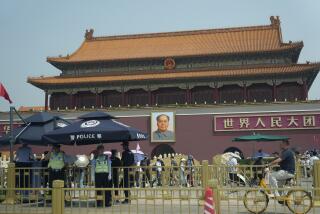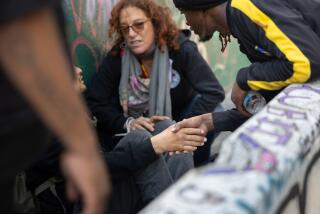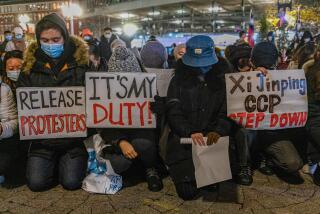Traditional Chinese medicine doctors are secretly helping Hong Kong protesters
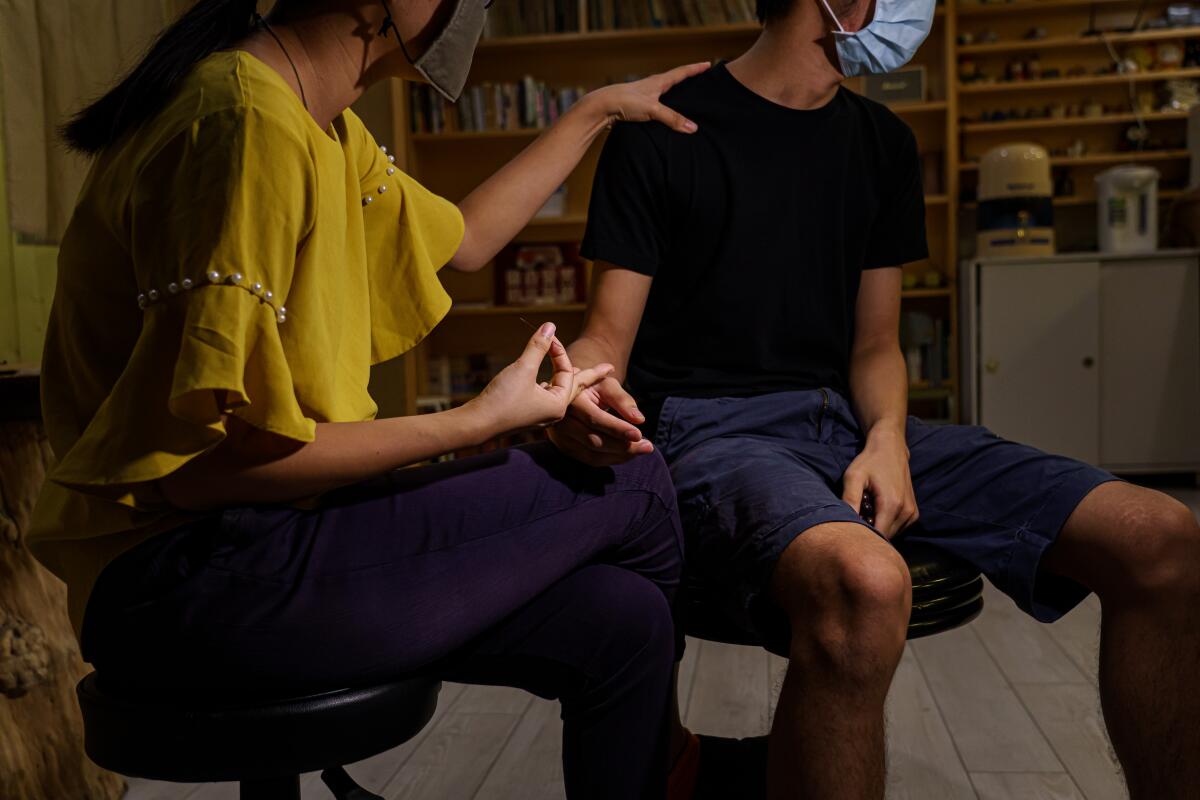
HONG KONG — The young man, cradling his right arm, stepped into a cramped room the size of a single-car garage with its windows covered by paper so no one could see inside.
Smoke filled the room — a clinic — wafting from behind a curtain, where a doctor had lighted a rolled-up stick of medicinal herbs that looked like a fat cigar.
“Are these all our sons and daughters?” a second doctor asked, using coded language for protesters who’ve joined mass anti-government demonstrations in Hong Kong.
The first doctor nodded, guiding the young man, Oz, onto a treatment bed.
The two doctors treat patients as part of a new underground network of traditional Chinese medicine practitioners in Hong Kong willing to render aid to injured protesters too afraid to go to hospitals because they may be arrested. Organized via Telegram, an encrypted messaging app popular with the protesters, the network has more than 50 doctors across all 18 districts of Hong Kong who have treated hundreds of protesters.
Doctors in the network use herbal medicines and ancient practices like acupuncture, believed to stimulate the body’s qi, or internal energy, and long-revered in Hong Kong, a bastion of Chinese cultural tradition even among residents who resent Chinese Communist Party rule.
Some of the doctors treat protesters in their clinics after hours. Others borrow or rent space from beauty salons, offices, community centers and nonprofit organizations. The doctors don’t hide their identities when treating patients, but asked that their full names and images not be published to avoid problems with authorities or at their regular jobs.
As Oz, who also asked that his full name not be used to avoid repercussions from authorities, lay on the treatment bed, the doctor stuck a needle into his leg and a second one in his arm, drawing no blood.
She massaged the arm with the needle in it, pressing it forward and back like a rolling pin, then held the burning stick of mugwort, an herb used for traditional Chinese treatments, over a pressure point.
According to 3,000 years of Chinese tradition, this practice, called moxibustion, stimulates circulation of blood and energy, helping to restore the body’s balance and release pain.
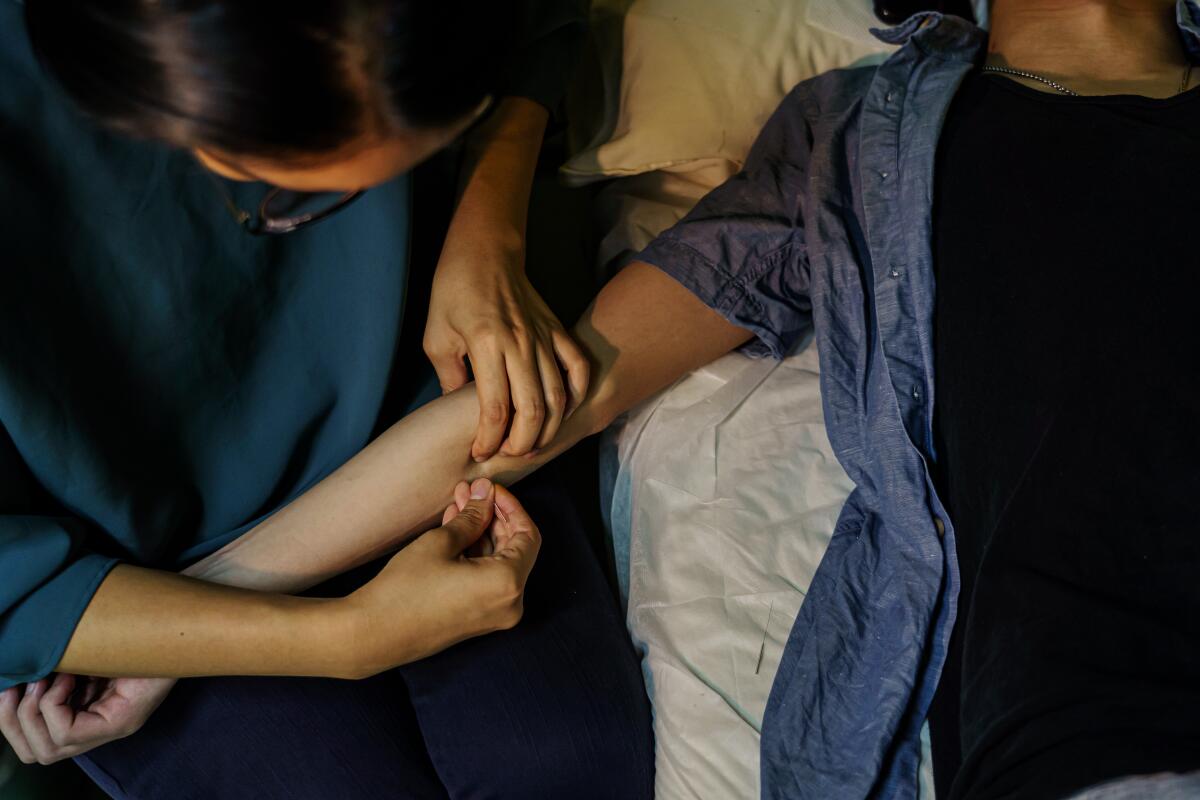
Oz breathed in and out, staring at the ceiling through thick-rimmed glasses. After being hurt in a protest two months earlier, he had found himself handcuffed to a bed in a regular hospital as a police officer in riot gear watched over him to make sure he didn’t escape.
He had since sworn off Hong Kong’s hospital systems altogether.
“Unless I’m literally about to die, I wouldn’t go to the ER,” said the 22-year-old.
Thousands of protesters like Oz have stopped going to Hong Kong’s hospitals, afraid of being reported by doctors and nurses for joining mass protests that have rocked the city for 20 weeks. They began as protests against an extradition bill that would have allowed deportation of people from Hong Kong, a semiautonomous territory and former British colony that enjoys a separate legal system, to mainland China.
That bill was withdrawn, but the movement’s aims have evolved to broader demands for police accountability and political reform, so Hong Kongers can vote for their own government. Protesters have clashed with police in increasingly radical ways, throwing Molotov cocktails and setting pro-China businesses ablaze while police fire tear gas and rubber bullets.
More than 2,300 protesters have been arrested, at least five of them at hospitals, according to lawyers working with the arrested individuals. Dozens have been charged with rioting, an offense punishable by up to 10 years in jail. They include a 14-year-old and an 18-year-old who both survived being shot by police in October.
Authorities have said the police response has been reasonable, considering the behavior of some protesters. After a police officer shot a protester, Hong Kong Police Chief Stephen Lo said the officer had acted in self-defense to avoid being attacked.
The underground doctors make a clear distinction between Chinese government and culture. For them, using traditional medicine is a way of asserting that Hong Kongers can challenge Beijing’s authority without rejecting their roots.
“Chinese culture is a way of life. What we want to take down is a regime that’s controlling people,” said Lee, 23, a graduate student of Chinese medicine who co-founded a Telegram group that now has more than 14,000 members.
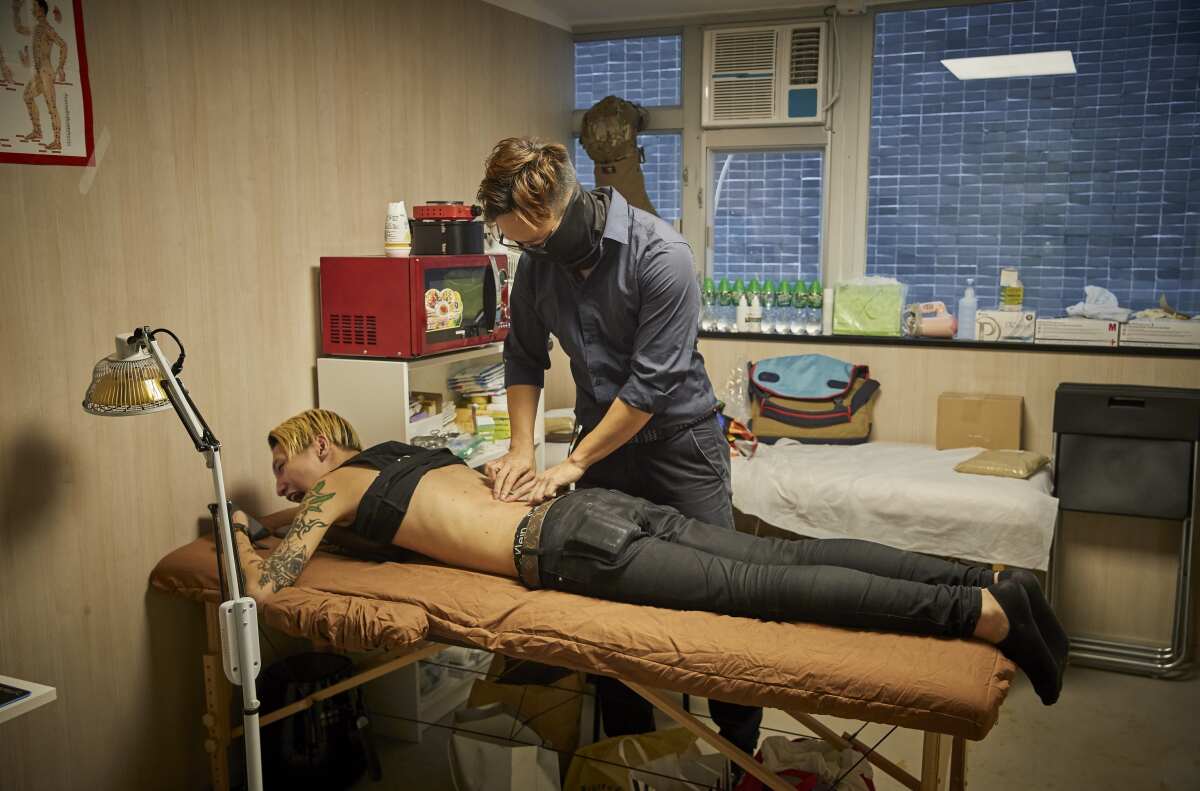
Lee studied traditional Chinese medicine in the mainland city of Guangzhou for five years. He’d grown up largely apolitical but attended a protest during Hong Kong’s 2014 pro-democracy Umbrella Movement, standing on the sidelines thinking the protesters were crazy.
“I thought, what’s the point?” he said. “The Chinese government is already in control for so many years. Do you really want to overthrow them? It’s impossible.”
But when Lee joined anti-extradition protests in late June, everything changed.
“I saw things I’d never seen before,” Lee said. “I saw Hong Kong police beating Hong Kong people. I smelled the tear gas. I watched people crying out on the streets like they weren’t afraid of death.”
Something twisted in his chest: shock, sorrow, fear, anger.
“You feel this kind of impulse. Like if I don’t go out right now and fight, maybe there won’t be Hong Kongers in the future,” he said. “Now I’m one of those people who don’t want to back down.”
Lee’s network has developed anti-burn ointment and herbal tonics with names like “TG Resolve” and “Lung Saver,” remedies for tear gas exposure that just require adding hot water. They give them out to protesters, many of whom suffer chronic coughing, breathing problems, indigestion, irregular menstruation, insomnia, anxiety and nausea.
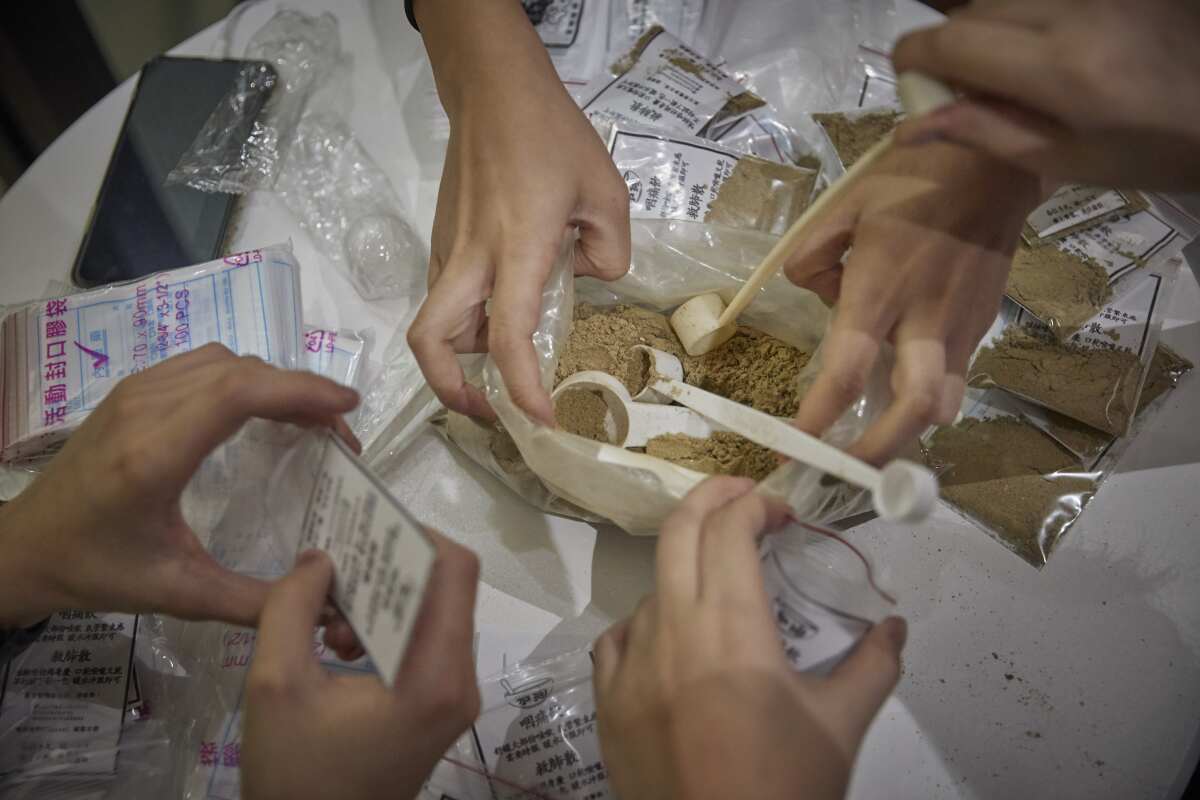
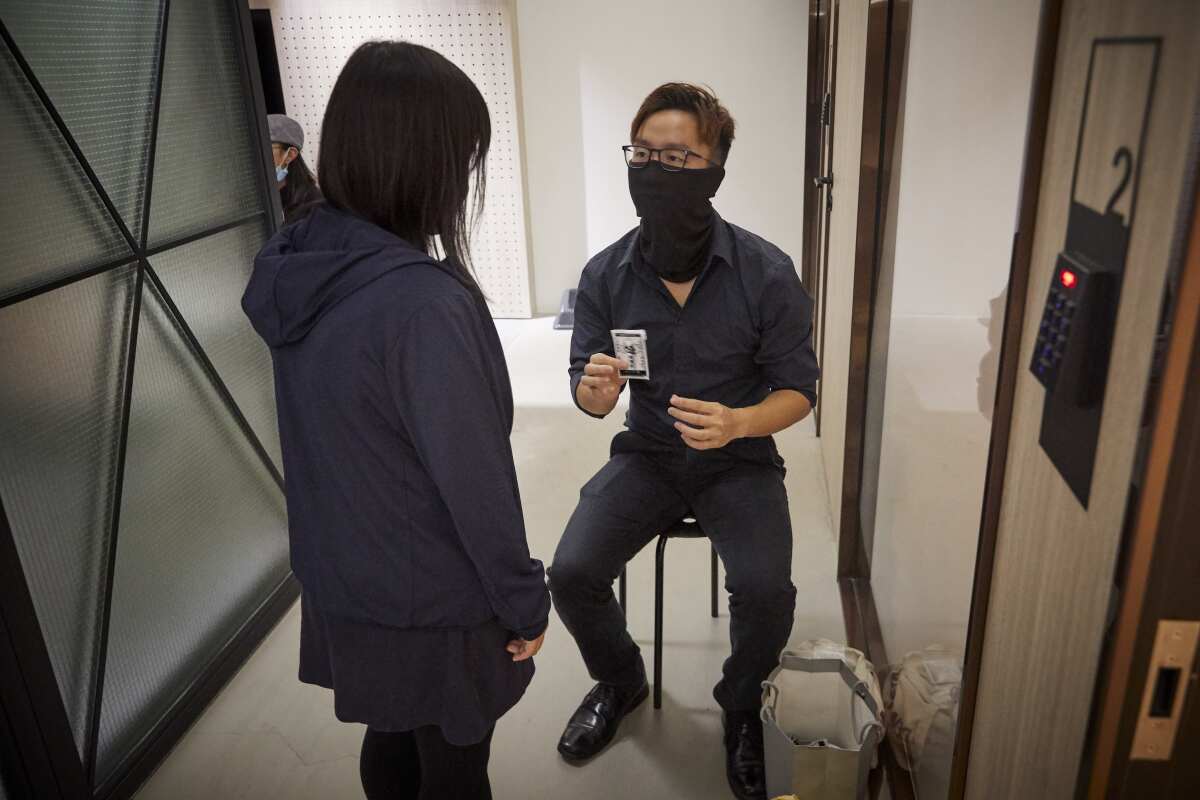
Some protesters also arrive with more serious injuries from confrontations with police. Lee described one protester he treated under supervision at the clinic where he interns whose chest and sides were bruised black and blue, and who said police had beaten him during detention.
“I will never be able to forgive Hong Kong police in this lifetime,” Lee said.
The underground doctors network is called Kwok Nan Chung Yi, or National Calamity Chinese Doctors. Chung is a pun that means “Chinese” and “loyal” at the same time. It means that protesters can receive free treatment, no questions asked, without being identified or reported to police.
“We help treat them. We don’t take any money. And if we can, we also help them get rid of that fear,” Lee said.
Since starting the group in early September, he’s treated more than a hundred people. He estimates that with 50 doctors seeing at least 50 people each, the group has treated a minimum of 2,500 patients.
The network’s funds, about $2,550 as of late October, come from donations, he said, often from older patients who insist on paying for their treatments.
At the clinics, patients use intentionally vague terms: “My arm is sore from throwing heavy objects,” one said. “I am nauseous after going out last night,” said another. “I ate a dragon egg,” said a patient, referring to tear gas exposure.
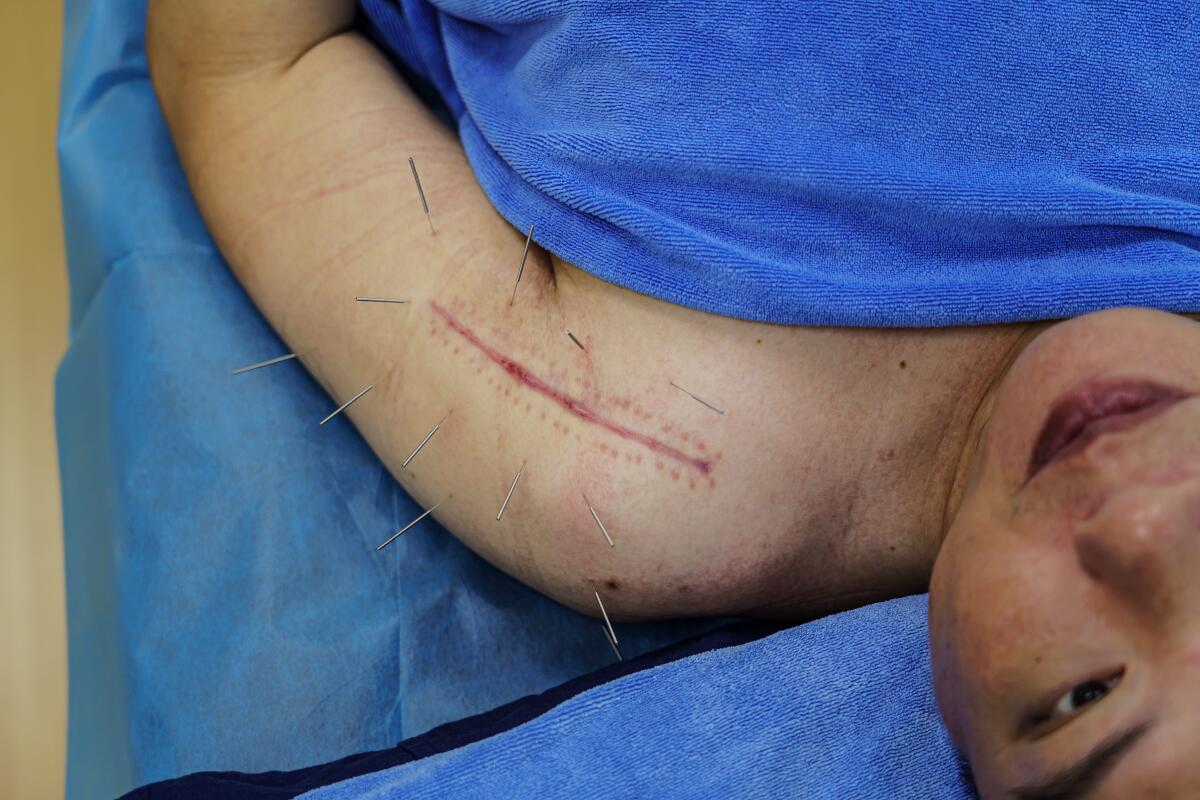
Protesters have developed their own code words, wary that conversation could end up as incriminating evidence — especially because authorities have stopped giving permissions for most protests, rendering them automatically illegal.
They go “dreaming” instead of protesting, pick up “stationery” instead of masks and umbrellas, and ride “school buses,” cars driven by volunteers who pick up protesters as they flee from police.
On a recent Monday night — typically the busiest because the biggest protests take place on Sundays — a steady stream of protesters filtered into one of the clinics.
A young woman with purple hair said she’d been coughing, feeling dizzy and having severe diarrhea since being tear-gassed the day before; her boyfriend had sprained his ankle running from the police. A teenage boy, stick-thin and serious-faced, requested a tonic for breathing problems.
Oz, wearing gray shorts and a wrinkly short-sleeved button-up shirt, had strained his arm. He didn’t specify how, only that it was in pain after he repeatedly threw heavy objects.
Oz, who was born in Shenzhen, China, and moved to Hong Kong at age 3, grew up wanting to be a police officer. He remembers taking a starry-eyed photo with a tactical unit of the Hong Kong police called Flying Tigers during elementary school. Cops were so cool, he’d thought at the time.
“But now, I can only describe them as beasts,” he said.
He said he witnessed police aggression throughout the summer, with increasing arrests of protesters but no investigation of the police.
On July 21, assailants in white T-shirts rampaged through a public transit station, beating civilians at random while police did not respond to frantic calls to their hotline. Oz said he lost trust in the police altogether.
A few weeks later, he was arrested during a protest. Several policemen jumped on him, pushing him to the ground. Blood streamed from cuts on his elbows and knees. He was detained for 42 hours in a police station, then in the hospital.
After his family bailed him out, Oz rejoined the protests.
“If you truly love your country, you try to help it not go down the wrong path. It’s like parents and children,” he said. “If you see them doing something wrong and say nothing, you don’t love them.”
More to Read
Sign up for Essential California
The most important California stories and recommendations in your inbox every morning.
You may occasionally receive promotional content from the Los Angeles Times.
